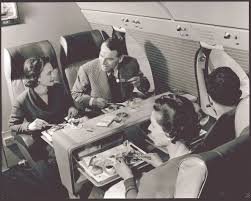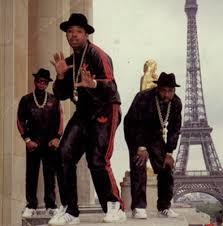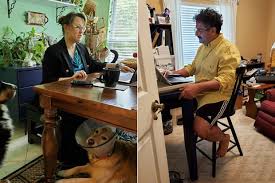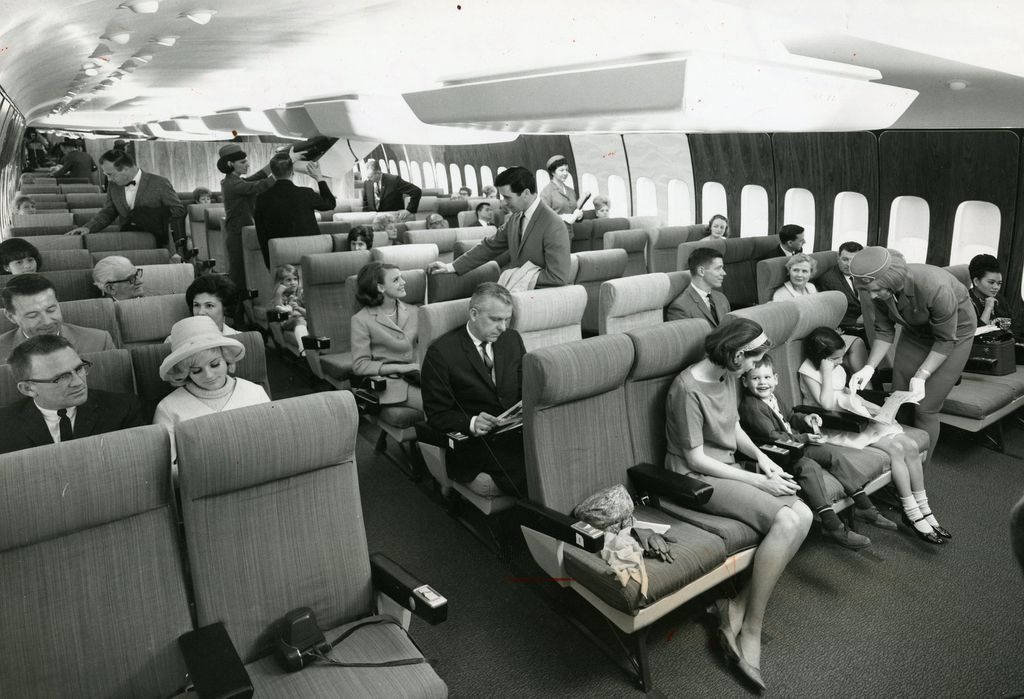When I was 10 years old, we took our first family vacation that did not include driving in my dad’s car. Don’t get me wrong, those trips to Plymouth Rock, Cooperstown to see the Baseball Hall of Fame, and the mountains in upstate New York, known as the Borscht Belt, were fun. Although, as the youngest child, sandwiched between my brother and sister, with the welch terroir sitting behind me on the rear speakers and my father smoking with the windows shut tight, I was exhausted by the time we arrived.
It was 1971 and my mother dressed me in my brown sports jacket, slacks, shirt, and tie. As we boarded the plane she said, “Steven, do not spill anything on yourself. That’s what you’ll be wearing tomorrow night for dinner.”
There was nothing unusual about this. All other travelers were dressed the same way. It reminded me of my dad shaving and wearing his starched white dress shirt, suit, tie, and freshly polished shoes, every morning when he walked down the steps, drank his cup of coffee, and had my mother drive him to the Long Island Railroad to earn a living to support his family.
It wasn’t just easier for my mother to dress her three children in their nicest clothes than to pack everything in the suitcases. It was the norm. Men shaved and wore suits. My grandfather wore a suit after he retired to walk to the local bank. My mother commented after taking us to Broadway to see You’re a Good Man, Charlie Brown, “I’m shocked that men were wearing sport jackets. In my day, Broadway meant, tuxedos and flowing gowns. You could never be as casual as that.”
Today to dress casually is quintessentially to dress like an American and to live, or to dream of living, fast and loose and carefree. It feels good. I get that. But how did we go from suit and tie to sweatpants, tank tops, and flip flops?
My brother married his wife the week before Thanksgiving in 1979. This was on the heels of my sister’s wedding six weeks earlier.
My mother was exhausted and smiled when my father surprised her with a trip to Puerto Rico for the three of us. “You don’t need to make a turkey this year.”
My sister asked about the hotel.
My father looked blankly and pointed at me. “He just started college and isn’t married. Why are am I still responsible for you?”
She explained she would rather spend a weekend in Puerto Rico than drive to Jersey on Thanksgiving Day to see her husband’s family.
My mother shook her head before walking away and mumbling, “Better make it for five.”

I was told to dress in something I would be wearing at dinner one night. Nothing was terribly formal, but a sports jacket would be required.
My mother looked at my father with disgust, when my sister arrived at the airport in jeans. That look was nothing, compared to her utter shock when her husband arrived wearing a velour sweatsuit.
My father turned toward me when I failed to control my laughter and the cup of coffee I had sipped was now poring out of my nose.

Noticing my mother clutching my father’s arm, my sister demanded I stop laughing before asking what was wrong with her husband’s warm-up suit, figuring the name, in this case, warm-up, made the difference.
The silence while standing by the gate was deafening.
“Clothes make the man,” my father whispered to me, although years later I did read he may have pilfered that line from Mark Twain. “It tells people you care. If you want to impress a woman, iron your shirt, shave, and polish your shoes. Women notice.”
It’s no longer the 1940s
Unless you’re able to splurge for first-class — or you own a private jet — travel is now anything but glamorous. Airports are crowded with women sporting bed head and donut pillows permanently affixed to their necks. Men in shorts and tank tops lifelessly pull carry-ons behind them, belabored expressions on their faces. They drag limbs across the floor as if they’re extras from “The Walking Dead,” although these airport zombies always seem to have screaming children in tow.
The airplane is no longer a cocktail party with wings. It’s a hulking, “hermetically sealed tube” crammed tightly with seats that gather us in one location and deposit us in another. This is reflected in the way people dress. (I refer you to Spirit Airlines.)
I get it, flights are long, seats are uncomfortable. You probably want to wear something flexible that can get spilled on and look like it’s been slept in before changing at the hotel. You might think that because you’re no longer getting chateaubriand carved seat-side, you shouldn’t have to bother wearing anything formfitting. Or feel like you’re being treated in an undignified manner, so you should be free to dress that way. Nobody will notice, right?
But there’s a difference between looking sloppy and being comfortable — you can look put-together and still be satisfied.
How to look in the workplace
Years later I worked for a sales manager who asked me why I was dressed so casually when I walked in on a Tuesday morning wearing a gray suit. That was nothing. I have no idea what happened to the guy who was wearing the short sleeve shirt.
The intention of a well-dressed workplace is to foster an image of professional success, and for the longest time the business suit embodied that confidence. But clothing as a symbol of (self-)expression has evolved with the times. Expensive suits no longer denote business success. Office attire no longer distinguishes management from workers. Silicon Valley’s jeans and t-shirts displaced the monotonous conformity of the workplace to create a more creative, less restrictive environment. In many business settings today a clean pair of jeans, wrinkle-free shirt and pair of sneakers fit right in. So how did the business power suit lose its, well, power?
In 1992, Levi’s began a guerrilla marketing campaign to try to define the idea of “Business Casual” as they saw fit. The impetus for this campaign was that, as companies began introducing “Casual Friday” and otherwise relaxing their dress codes, a problem arose. PR guru Rick Miller, who worked on the Levi’s campaign, outlined the issue. “We found when guys shed their coats and ties they really didn’t know what to wear… People were showing up in Hawaiian print shirts or sandals and shorts. Frankly, there were concerns on the part of management that work might become too much fun.”
As such, Levi’s created a brochure called “A Guide to Casual Businesswear” and sent it to approximately 25,000 businesses across the United States. The brochure was not only helpful to companies trying to figure out how to define acceptable casual wear at the workplace but also a thinly veiled advertisement for Levi’s Dockers– khaki pants formerly generally only seen on the golf course. It worked. Many businesses used elements from this guide for their own guidelines for business casual wear for their employees. Within a year, men across the country began turning up for work en masse wearing Dockers.
Why stop there?
Add to that Jobs, Zuckerberg, The sweatsuit. Casual, well, every day. It all started creeping in. Restrictive attire didn’t matter. Looking good in a suit was not as important for the guys in power who wanted results and didn’t care what you looked like when they were achieved. Comfort became the new norm.

At the end of the day, the trend towards informality should not take us away from the traditional business emphasis on appearance and presentation. It simply replaces one standard with another that is, in its own way, appearance can be deceiving.
I like the thought of comfort. As I am typing this, I am sitting at a table, on my laptop, in need of a shower and have no idea where my flip flops are hiding.
However, I will say, I am not smart enough or confident enough to go on a first date in a pair of sneakers, skinny jeans, and a t-shirt. (Who invented skinny jeans anyway?)
Nice pants, a tucked-in shirt, a jacket, a shave, a watch that does nothing but tell time, and polished shoes. If nothing else, I will be noticed.

